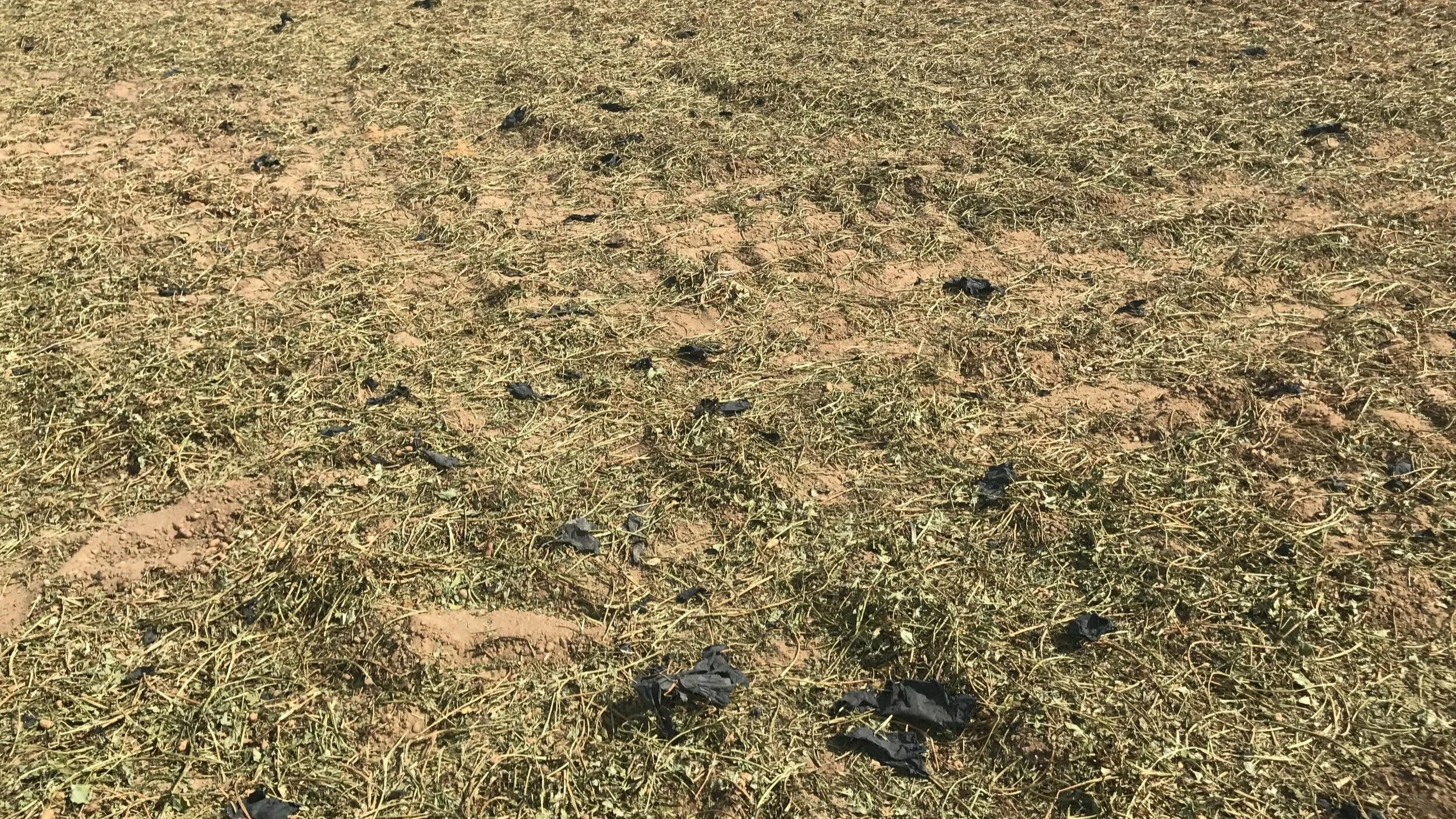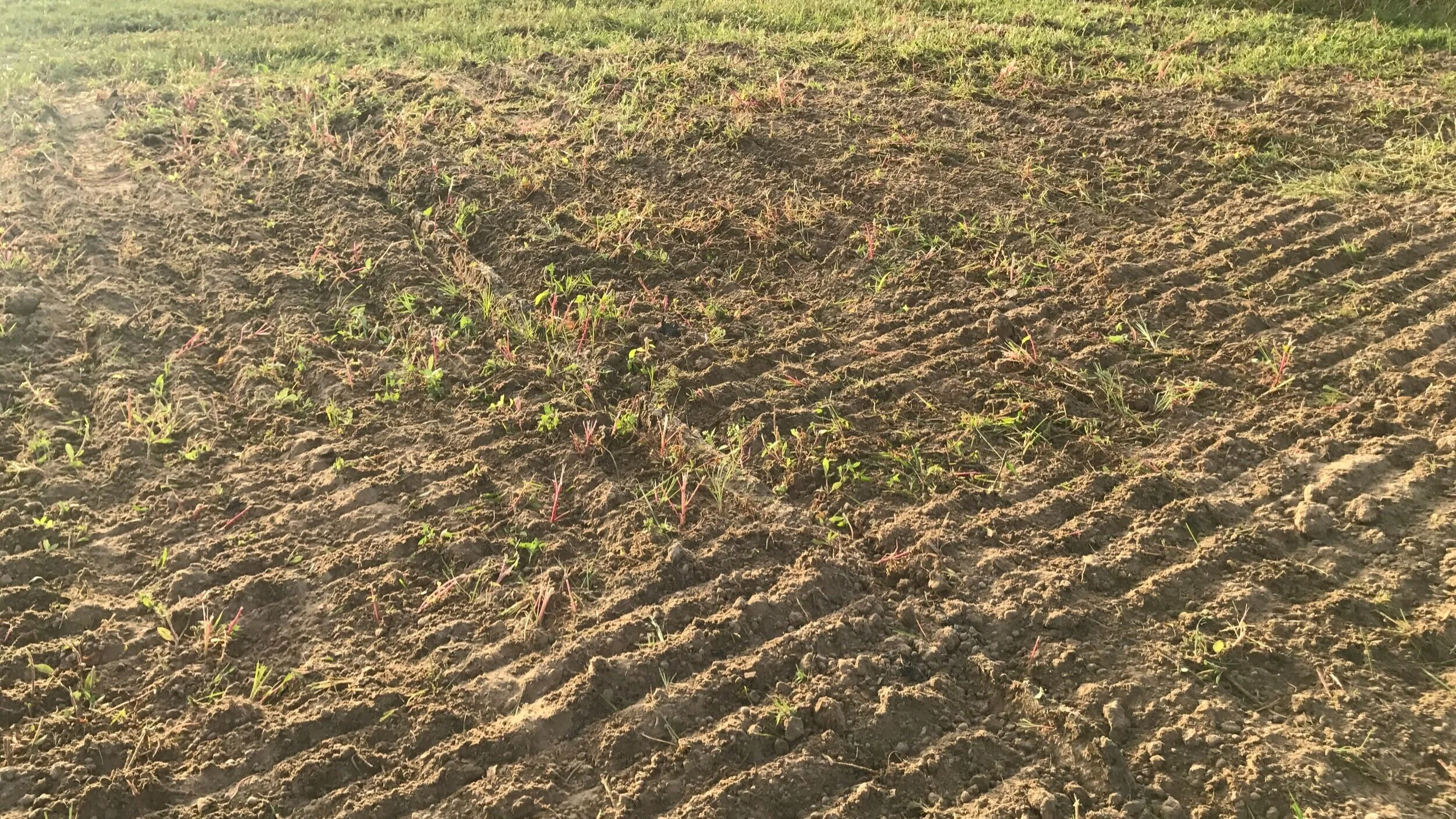The Impact of Oxo-degradable Films in Our Vegetable Crops
Oxo-degradable polyethylene mulch films help farmers reduce labor costs associated with collecting plastic. However, these plastics contribute to pollution as they leave significant visible fragments in the fields. These residues lengthen the farmer's work in the spring, as the plastic clings to the "teeth" of the equipment during fieldwork. Worse still are the fact that they break down into persistent microplastics that remain in and contaminate the fields, dispersing harmful additives into the environment.
Let's try to better understand the real impact of oxo-degradable polyethylene in our vegetable crops.A Significant Advance in Agriculture
The introduction of polyethylene (1) as agricultural mulch in the 1950s and 1960s marked an important turning point in agriculture. It offered considerable advantages in terms of crop yield. This method improved the control of soil moisture and temperature, eliminated weeds, and promoted better plant growth.
Over time, the arrival of photodegradable polyethylene (2) marked a first evolution in the use of agricultural plastics, using UV energy to degrade the film, thereby avoiding the costly and laborious step of collecting old plastic at the end of the season. Then the introduction of oxo-degradable polyethylene (3) represented a further advance. This latter is designed to decompose more quickly under the combined action of oxygen and light to reduce the size of plastic residues.(1) Polyethylene : Polyethylene is a plastic made entirely from petroleum derivatives. It is not biodegradable, and the decomposition can take hundreds of years.
(2) Photodegradable Polyethylene : Containing heavy metal additives, this plastic degrades under the effect of UV rays without biodegrading. In sunlight, the plastic rapidly disintegrates into microplastics, while the buried part decomposes into macroplastics, which remain in the soil for 5 to 10 years before potentially transforming into microplastics.
(3) Oxo-degradable Polyethylene : Oxo-degradable polyethylene also contains metallic additives to promote its decomposition under the effects of oxygen and UV. It does not biodegrade; it fragments into microplastics within 2 to 5 years, sometimes longer.
A False Green Promise...
In retrospect, it becomes evident that oxo-degradable polyethylene is highly harmful. Far from solving the plastic pollution crisis, they contribute to another form of contamination: microplastics (4) and macroplastics (5). The degradation of these materials into persistent plastic fragments, far from the hoped-for biodegradability, accumulates in agricultural lands and complicates soil work. It is also essential to note that the additives released, and the microplastics created during the decomposition of these plastics are potentially harmful to both the environment and our health.The use of oxo-degradable polyethylene was long perceived as harmless until global alerts, notably in Europe, were raised. Since the late 2010s, intensified research on the harmful effects of microplastics and nanoplastics (6) on human health has raised environmental concerns, leading to their prohibition in several European countries.The European Court of First Instance rejects the appeal lodged by producers of oxodegradable plastics and upholds the ban.
The European Union has confirmed its ban on products made from oxodegradable plastics, in the interests of environmental protection and public health. British company Symphony Environmental Technologies, which specializes in the manufacture of plastics enriched with a pro-oxidant additive that allegedly accelerates biodegradation, challenged the ban, arguing that its products, described as "oxo-biodegradable", should not be affected by the measure.The Court rejected this request, supported by scientific studies indicating that the degradation of these plastics is insignificant, if not non-existent, and their consequences are harmful to health and the environment.Studies are seeking to demonstrate a possible link between microplastics and nanoplastics and an increased risk of colon cancer, as well as a trend for this disease to manifest at an increasingly young age. The nanoplastics found in our bodies mainly come from two sources: our food and the water we consume. For example, billions of nanoplastics can be present in a single bottle of water.(4) Microplastic Microplastics are tiny plastic fragments generally smaller than 5 mm. They pose risks to the environment and health, including a potential risk of cancer. The time required for their decomposition is not clearly established, and their presence is concerning for health.
(5) Macroplastic Macroplastics are plastic fragments generally larger than 5 mm. They are very troubling for vegetable producers who till their fields in the spring, forcing them to regularly clean the teeth of their agricultural equipment.
(6) Nanoplastic Nanoplastics are tiny particles of less than 100 nanometers. Their small size raises concerns as they can potentially penetrate living cells and tissues.
Plastic debris in a field that used oxo-degradable polyethylene
Compostable Mulch: A Green Revolution
Farmers have a significant need to save on labor costs, but unfortunately, oxo-degradable plastics cause more harm than good. With the advent of compostable (7) mulch in the 2000s, a green and suitable solution for the demands of vegetable crops emerged. These compostable mulches are designed to dissolve entirely and naturally before the next growing cycle.(7) Compostable For a product to be compostable, 90% of the material must be transformed into carbon dioxide, water, and humus within six months in an industrial composting site. The conditions of biodegradation in the field and at composting sites are very similar. Therefore, it can be asserted that every compostable product is biodegradable, but the reverse is not true.
Attuned to the needs of environmentally conscious farmers, we at FilmOrganic have created a range of certified compostable mulches with a predictable lifespan ranging from 2 to 15 months. We use only the best-certified ingredients available on the market. No polyethylene. No plastic. No pollution. A genuine compostable technology!FilmOrganic freshly disked after harvest. No residue left in the field!
Launch of Organic Guard 5 Years
FilmOrganic is expanding its Organic Guard range with a sustainable 5-year option. These biodegradable (8) membranes, specially designed for forestry, are now offered with a minimum lifespan of 3 or 5 years. Organic Guard block weeds, conserve moisture, and generate enough nitrate to act as fertilizers. These three benefits result in a more robust tree that will grow faster in height, diameter, and leaf volume. The ultimate benefit is faster carbon sequestration. Please visit filmorganic.com/organicguard for more information.In conclusion, although the use of polyethylene in agriculture was initially seen as a revolution, its harmful effects on the environment and health are becoming increasingly evident today. Fortunately, compostable mulches represent a real ecological solution, in harmony with the needs of farmers and respect for the environment.It is time to turn the page on polluting plastics and embrace responsible agriculture for a healthier and more sustainable future.(8) BiodegradableBiodegradable materials can be decomposed by fungi, bacteria, or any other biological process. To biodegrade means to break down (degrade) life (bio), which is the natural process of returning materials to their natural elements. The matter will decompose into carbon dioxide, water, and humus.
Sources :
LIBRARY OF CONGRESS : European Union: Ban on Single-Use Plastics Takes Effect
NATIONAL LIBRARY OF MEDECINE : Could Microplastics Be a Driver for Early Onset Colorectal Cancer?


